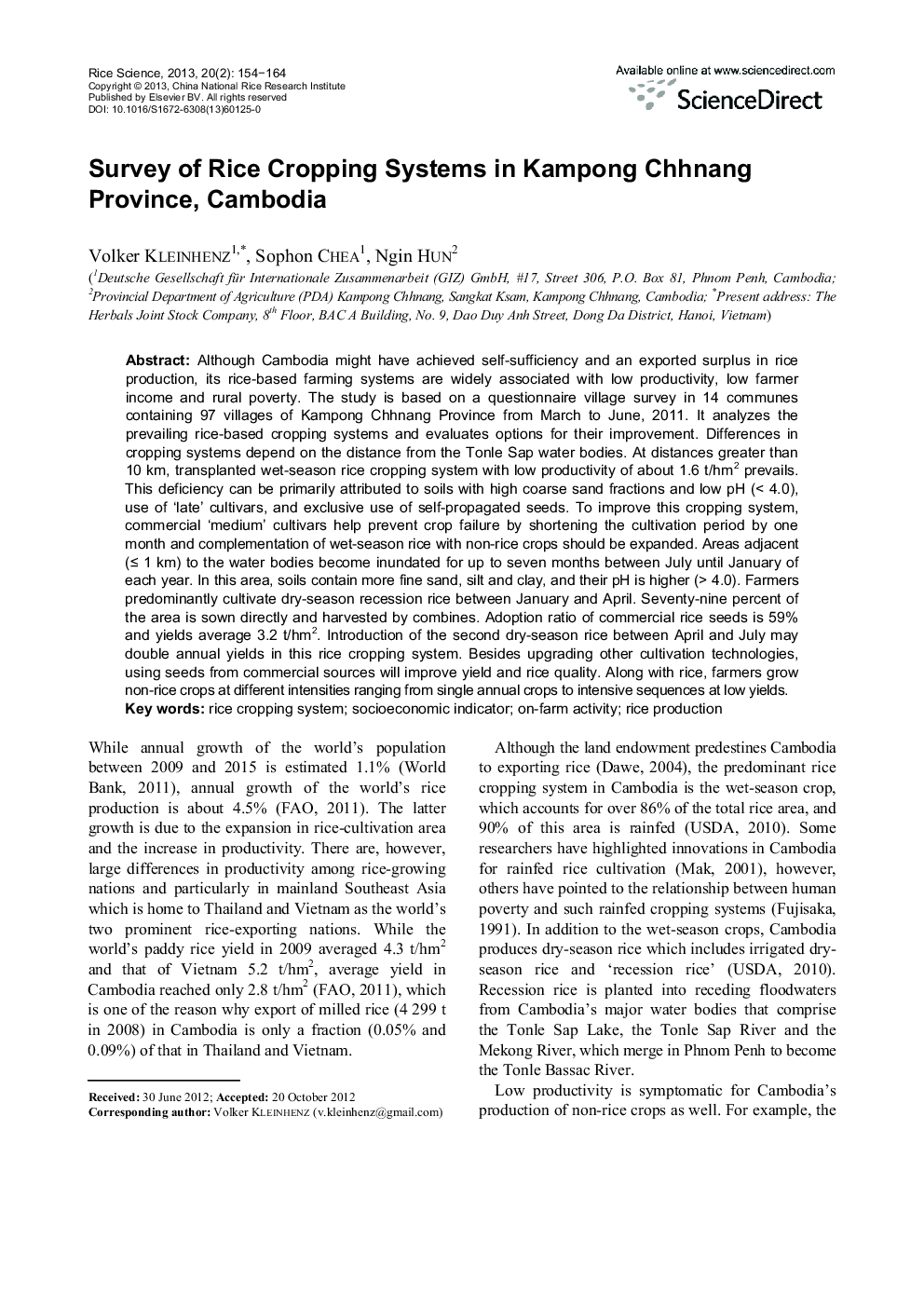| Article ID | Journal | Published Year | Pages | File Type |
|---|---|---|---|---|
| 4501913 | Rice Science | 2013 | 11 Pages |
Although Cambodia might have achieved self-sufficiency and an exported surplus in rice production, its rice-based farming systems are widely associated with low productivity, low farmer income and rural poverty. The study is based on a questionnaire village survey in 14 communes containing 97 villages of Kampong Chhnang Province from March to June, 2011. It analyzes the prevailing rice-based cropping systems and evaluates options for their improvement. Differences in cropping systems depend on the distance from the Tonle Sap water bodies. At distances greater than 10 km, transplanted wet-season rice cropping system with low productivity of about 1.6 t/hm2 prevails. This deficiency can be primarily attributed to soils with high coarse sand fractions and low pH (< 4.0), use of ‘late’ cultivars, and exclusive use of self-propagated seeds. To improve this cropping system, commercial ‘medium’ cultivars help prevent crop failure by shortening the cultivation period by one month and complementation of wet-season rice with non-rice crops should be expanded. Areas adjacent (≤ 1 km) to the water bodies become inundated for up to seven months between July until January of each year. In this area, soils contain more fine sand, silt and clay, and their pH is higher (> 4.0). Farmers predominantly cultivate dry-season recession rice between January and April. Seventy-nine percent of the area is sown directly and harvested by combines. Adoption ratio of commercial rice seeds is 59% and yields average 3.2 t/hm2. Introduction of the second dry-season rice between April and July may double annual yields in this rice cropping system. Besides upgrading other cultivation technologies, using seeds from commercial sources will improve yield and rice quality. Along with rice, farmers grow non-rice crops at different intensities ranging from single annual crops to intensive sequences at low yields.
